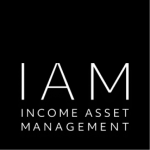NCIG – Bond buyback of up to US$45m
The news is credit positive for both senior and junior debt instruments. We still expect junior debt securities to be called at first call date and are happy to add to either the A$ HIPRS and/or US$ HITRS, depending on individual investor(s) currency view.
NCIG announced a bond buyback of up to US$45m of the combined original face value of its senior secured 4.4% 09/29/2027 & 4.7% 05/12/2031 bonds, respectively. In our view, the current tender price is favourable for the 4.4% 09/29/2027s (+105) but unfavourable for the 4.7% 05/12/2031s (+200). The reason for this is that the tender price of the 4.4% 2027s is inside secondary trading levels, whilst for the 4.7% 2031s it is wider than secondary levels, respectively. Our facilitation desk can provide more information here.
NCIG uses the Gc NEWC 6000 index when calculating the Coal Price Linked Acceleration Amortisation (CPLAA) charge. The average coal price over the quarters ending 31/12/24 and 31/03/25 was US$138.79/t and US$105.35/t, respectively. Note that when NCIG look to set the next quarter’s CPLAA, they use the average AUD equivalent coal price over the preceding quarter, ending the 15th day of the quarter. For example, for the September 2025 quarter, they will use the average AUD coal price from 16/03/2025 to 15/06/2025, with the new CPLAA rate being effective 1/07/2025. The average coal price during this current quarterly calculation period (16/03/2025 – 10/06/2025) has been ~US$98/t or ~A$154/t. While the company may not be earning the maximum additional toll charge (US$3/t), it is still earning a charge of between US$0.75-US$3/t as the coal price is still well above the minimum threshold of A$100/t.
The buyback will be funded entirely through the CPLAA charge. We have attached a note that outlines the CPLAA charge to this announcement. Note, regardless of this buyback, NCIG will continue to make redemptions of its senior debt instruments as a result of the termination payments it is receiving from BHP following their proposed exit by 2030.
Early paydown of any senior debt instruments will be consistent with the underlying terms of any senior debt instrument repaid. The accelerated amortisation doesn’t change the amortisation schedule per se (noting that NCIG’s schedule of amortisation is only contractually scheduled in various debt instruments in the short to medium term). The accelerated amortisation is over and above the scheduled (and not linked/scheduled to a particular instrument). The net impact of the additional amortisation is that it brings forward the date at which NCIG’s senior debt will be fully repaid. The accelerated amortisation isn’t applicable to NCIG’s junior debt facilities.
At this stage, NCIG would only look to redeem the junior debt securities on their respective call dates. The first call date on the junior debt securities is 31/03/2027. If NCIG remarkets/refinances the instruments on this date (or on any interest payment date thereafter), no make-whole provisions apply. Anything outside of this (through amortisation or repurchases) would incur a make-whole fee. There are no conditions in the existing senior documents that prevent us from remarketing/refinancing both the HITRS and HIPRS.
To discuss, call us on
1300 784 132
Get In Touch
Please contact your IAM relationship manager if you have any questions or would like to discuss.

